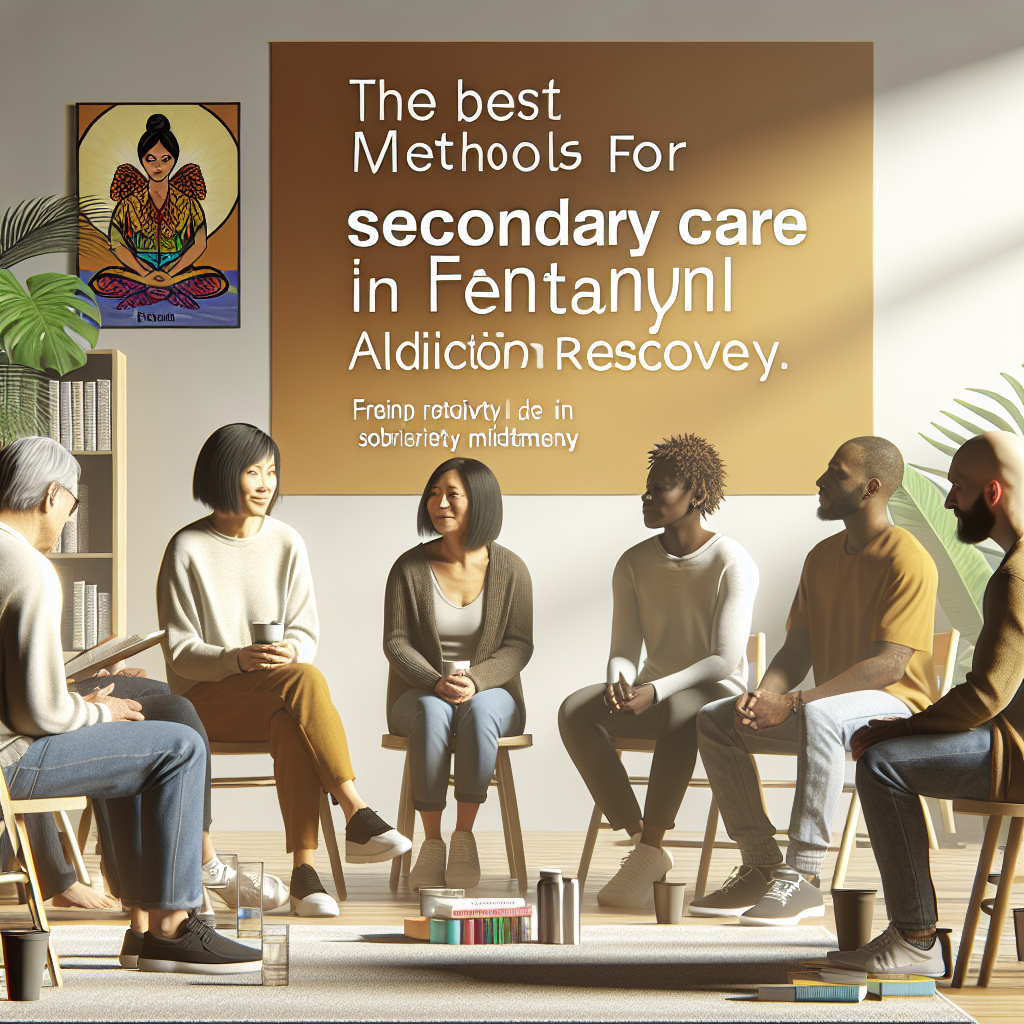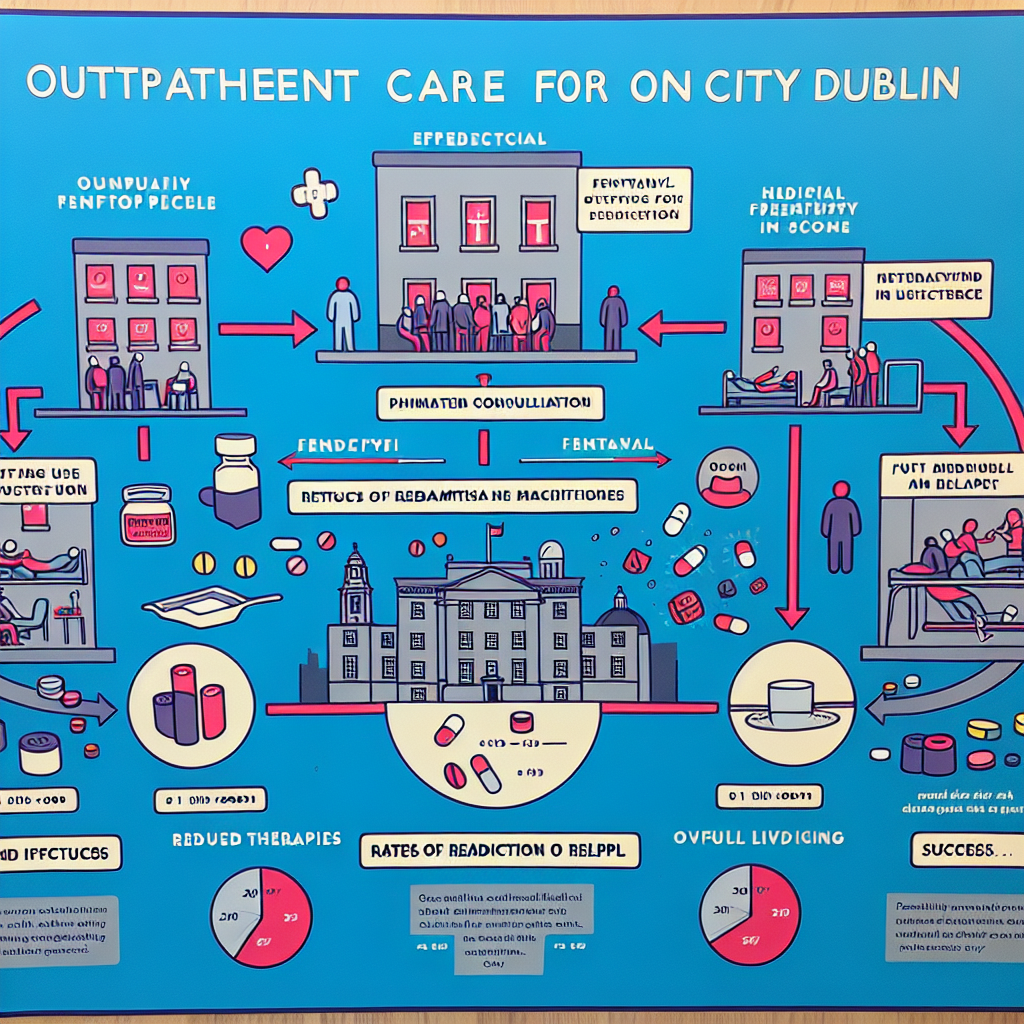-
Table of Contents

“Empowering Recovery: Advanced Secondary Care Solutions for Fentanyl Addiction”
Introduction
Secondary care in fentanyl addiction recovery involves specialized medical and therapeutic interventions following initial detoxification and stabilization. The best methods for secondary care include comprehensive behavioral therapies, medication-assisted treatment (MAT), and continuous monitoring and support. Behavioral therapies such as Cognitive Behavioral Therapy (CBT) and contingency management help address the psychological aspects of addiction, while MAT, using medications like buprenorphine or methadone, assists in managing withdrawal symptoms and reducing cravings. Additionally, ongoing support through group therapy, peer support groups, and regular follow-up appointments with healthcare providers ensures sustained recovery and helps prevent relapse. Integrating these methods creates a holistic approach that addresses both the physical and psychological components of fentanyl addiction, promoting long-term recovery and improved quality of life.
Comprehensive Counseling Approaches in Secondary Care for Fentanyl Addiction Recovery
In the journey of fentanyl addiction recovery, secondary care plays a pivotal role in ensuring long-term success and stability. Comprehensive counseling approaches are essential in this phase, as they provide the necessary support and tools for individuals to navigate the complexities of life post-detoxification. One of the most effective methods in secondary care is cognitive-behavioral therapy (CBT). This approach helps individuals identify and change negative thought patterns and behaviors associated with their addiction. By focusing on the underlying psychological triggers, CBT empowers individuals to develop healthier coping mechanisms, thereby reducing the risk of relapse.
Transitioning from detoxification to secondary care, it is crucial to incorporate motivational interviewing (MI) into the counseling process. MI is a client-centered approach that enhances an individual’s motivation to change by exploring and resolving ambivalence. This method is particularly effective in fostering a sense of autonomy and self-efficacy, which are vital for sustained recovery. By engaging in open-ended conversations and reflective listening, counselors can help individuals articulate their goals and aspirations, reinforcing their commitment to a drug-free life.
Furthermore, group therapy offers a supportive environment where individuals can share their experiences and learn from others who are on a similar path. The sense of community and shared understanding in group therapy sessions can significantly alleviate feelings of isolation and stigma often associated with addiction. Through peer support, individuals gain valuable insights and encouragement, which can be instrumental in maintaining their recovery journey.
In addition to these therapeutic approaches, family counseling is an integral component of secondary care. Addiction affects not only the individual but also their loved ones. Family counseling aims to rebuild trust, improve communication, and address any co-dependent behaviors that may have developed during the period of addiction. By involving family members in the recovery process, individuals receive a robust support system that can provide emotional and practical assistance, enhancing their chances of long-term success.
Moreover, holistic therapies such as mindfulness meditation, yoga, and art therapy can complement traditional counseling methods. These practices promote overall well-being by reducing stress, improving emotional regulation, and fostering a sense of inner peace. Mindfulness meditation, for instance, teaches individuals to stay present and manage cravings without judgment, while yoga enhances physical health and mental clarity. Art therapy, on the other hand, provides a creative outlet for expressing emotions and processing trauma, contributing to emotional healing and resilience.
Another critical aspect of secondary care is the development of a comprehensive aftercare plan. This plan should include regular follow-up sessions with counselors, participation in support groups, and ongoing monitoring of progress. An aftercare plan ensures that individuals remain accountable and continue to receive the support they need as they reintegrate into society. It also provides a safety net in case of any setbacks, allowing for timely interventions and adjustments to the recovery strategy.
Lastly, it is essential to recognize the importance of personalized care in secondary recovery. Each individual’s journey is unique, and a one-size-fits-all approach is unlikely to be effective. Tailoring counseling methods to address the specific needs, preferences, and circumstances of each person can significantly enhance the efficacy of secondary care. By adopting a holistic and individualized approach, counselors can help individuals build a strong foundation for a fulfilling and drug-free life.
In conclusion, comprehensive counseling approaches in secondary care are vital for the successful recovery from fentanyl addiction. By integrating cognitive-behavioral therapy, motivational interviewing, group therapy, family counseling, holistic therapies, and personalized aftercare plans, individuals are equipped with the tools and support they need to achieve lasting sobriety. Through dedication, empathy, and a multifaceted approach, secondary care can inspire hope and facilitate profound transformation in the lives of those recovering from fentanyl addiction.
Integrating Medication-Assisted Treatment in Secondary Care for Fentanyl Addiction Recovery
Integrating Medication-Assisted Treatment in Secondary Care for Fentanyl Addiction Recovery
Fentanyl addiction is a formidable challenge, but with the right strategies, recovery is not only possible but also sustainable. One of the most effective approaches in secondary care for fentanyl addiction recovery is the integration of Medication-Assisted Treatment (MAT). This method combines medications with counseling and behavioral therapies, providing a holistic approach to treatment that addresses both the physical and psychological aspects of addiction.
To begin with, MAT involves the use of FDA-approved medications such as methadone, buprenorphine, and naltrexone. These medications work by normalizing brain chemistry, blocking the euphoric effects of opioids, and relieving physiological cravings. Methadone, for instance, is a long-acting opioid agonist that reduces withdrawal symptoms and cravings, allowing individuals to focus on their recovery journey. Buprenorphine, a partial opioid agonist, offers similar benefits but with a lower risk of misuse. Naltrexone, an opioid antagonist, prevents relapse by blocking the effects of opioids. By stabilizing the brain’s chemistry, these medications enable individuals to engage more effectively in counseling and behavioral therapies.
Transitioning from the initial detoxification phase to secondary care, the role of MAT becomes even more crucial. During this stage, individuals are often vulnerable to relapse due to lingering cravings and psychological triggers. Integrating MAT into secondary care provides a safety net, reducing the risk of relapse and promoting long-term recovery. Moreover, MAT can be tailored to meet the unique needs of each individual, ensuring that the treatment plan is both personalized and effective.
In addition to the pharmacological benefits, MAT also facilitates engagement in counseling and behavioral therapies, which are essential components of secondary care. Cognitive-behavioral therapy (CBT), for example, helps individuals identify and change negative thought patterns and behaviors associated with addiction. Motivational interviewing (MI) enhances motivation and commitment to recovery, while contingency management (CM) provides tangible rewards for positive behaviors. By addressing the psychological aspects of addiction, these therapies complement the pharmacological effects of MAT, creating a comprehensive treatment plan that supports holistic recovery.
Furthermore, integrating MAT in secondary care fosters a supportive environment that encourages long-term recovery. Peer support groups, such as Narcotics Anonymous (NA), provide a sense of community and shared experience, reducing feelings of isolation and promoting accountability. Family therapy strengthens relationships and improves communication, helping to rebuild trust and support systems that may have been damaged by addiction. By incorporating these elements into secondary care, individuals are more likely to achieve and maintain sobriety.
It is also important to recognize the role of healthcare providers in the successful integration of MAT in secondary care. Physicians, counselors, and other healthcare professionals must work collaboratively to develop and implement individualized treatment plans. Continuous monitoring and adjustment of these plans ensure that they remain effective and responsive to the evolving needs of the individual. Education and training for healthcare providers are also essential, as they must be equipped with the knowledge and skills to deliver MAT effectively and compassionately.
In conclusion, integrating Medication-Assisted Treatment in secondary care for fentanyl addiction recovery offers a multifaceted approach that addresses both the physical and psychological dimensions of addiction. By combining medications with counseling and behavioral therapies, MAT provides a comprehensive and personalized treatment plan that promotes long-term recovery. With the support of healthcare providers, peer groups, and family, individuals can overcome the challenges of fentanyl addiction and build a healthier, more fulfilling life.
Q&A
1. **Question:** What are effective behavioral therapies for secondary care in fentanyl addiction recovery?
**Answer:** Effective behavioral therapies for secondary care in fentanyl addiction recovery include Cognitive Behavioral Therapy (CBT), Contingency Management (CM), and Motivational Interviewing (MI).
2. **Question:** What role do support groups play in secondary care for fentanyl addiction recovery?
**Answer:** Support groups, such as Narcotics Anonymous (NA) and SMART Recovery, provide peer support, accountability, and a sense of community, which are crucial for maintaining long-term sobriety and preventing relapse.
Conclusion
The best methods for secondary care in fentanyl addiction recovery include a combination of medication-assisted treatment (MAT) with drugs like buprenorphine or methadone, comprehensive behavioral therapies such as cognitive-behavioral therapy (CBT) and contingency management, and robust support systems including peer support groups and family therapy. Additionally, continuous monitoring and follow-up care, integration of mental health services, and individualized treatment plans tailored to the patient’s specific needs are crucial for effective recovery. These methods collectively address both the physiological and psychological aspects of addiction, thereby enhancing the chances of long-term recovery and reducing the risk of relapse.



